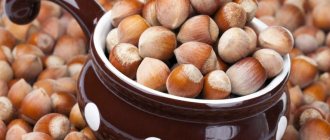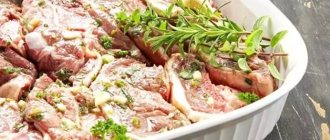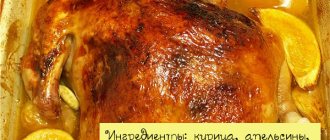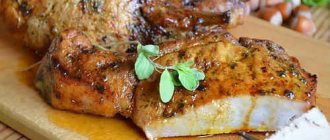Cheese is a very versatile ingredient, often present in hot dishes prepared in the oven. In this situation, a product with such quality as fusibility is required. It is this that, when spread, creates an amazingly delicious golden brown crust and stretches into appetizing thin threads during consumption. The trouble is that not all cheeses are equally good for the oven. We will describe below which of them are ideal for baking and various dishes.
What kind of cheese should I put where?
The modern cheese assortment is very large and therefore any self-respecting housewife must understand how to best use this or that type. Such knowledge allows you to save time wasted on an intuitive search for the ideal option, and money wasted on a product that is not suitable for a particular purpose.
Let's start with pizza. As you know, this dish requires an oven and certainly cheese. In the homeland of this dish, everyone is sure that you can’t cook it without Mozzarella. This variety melts well, but at the same time retains its original shape. Moreover, even if the pizza sits in the oven, the cheese under the crust will still remain very tender. What’s interesting is that even after cooling, Mozzarella retains its acquired softness.
Pasta is not cooked in the oven, but it goes great with cheese. The latter should be placed in a hot dish, so it is important that it melts very quickly. The ideal choice here would be Parmesan, famous for its divine aroma and taste with fruity and nutty notes. The hardness of the product allows it to be cut very thin. Translucent plates wonderfully decorate a pasta dish and add sophistication to it.
What specific cheese is best to use when creating lasagna? Here it is right to combine the tenderness of Ricotta with the aroma of Parmesan. The first product should only be taken fresh, since cheese that has been sitting for some time acquires too strong a taste and unnecessary hardness.
When preparing Greek salad, use only Feta. Its saltiness perfectly complements fresh vegetables, and its softness pleasantly contrasts with their juiciness. In other salads (for example, Shopska) you can also use Brynza.
Fondue is another dish that is becoming popular in our country, the preparation of which requires not an oven, but a special heated pot. This dish was invented in Switzerland, which is why the tribal Gruyère becomes the only choice for it. The named cheese has high meltability and a pleasant fruity flavor, emphasized by the cherry liqueur added to the pot. At the same time, true gourmets recommend adding a little Emmental (1 to 5).
Breaded mozzarella
You will need:
- 450 g small mozzarella balls
- 1 stack olive oil
- 0.5 stack. flour
- 1 egg
- 1.5 stack. breadcrumbs
- salt - to taste
- parsley - to taste
Preparation:
- Dry the mozzarella balls with paper towels.
- In a sauté pan or small saucepan, heat the oil (high smoke point) over medium heat to 180 to 190 degrees.
- Place the flour in one medium bowl, the breadcrumbs in a second, and lightly beat the egg in a third. Take the mozzarella balls and alternately bread them in flour, then dip them in the egg and bread crumbs.
- Fry the mozzarella in the preheated oil until golden brown and transfer to a prepared plate lined with paper towels. Season immediately with salt. Before serving, garnish with parsley and serve with your favorite sauce.
Compatibility of cheese with other products
Choosing cheese for a particular dish is a science in itself. Experienced housewives can be guided by their own intuition, and it wouldn’t hurt for young housewives to get acquainted with the general principles.
Any blue cheese with nuts or dried fruits makes a good duo. A touch of liquid honey accentuates its perfection.
Creamy soft varieties such as Camembert or our Smolensky, harmonize with:
- wheat toast;
- baguette;
- croissants;
- fruits (peaches, nectarines, grapes, pears);
- light dry wines.
They will also survive baking in the oven, but only as one of the ingredients in the filling of an open or closed pie.
Semi-solid varieties have an oily, smooth texture. They are served for dessert (together with fruit) and used to create snacks. Cheeses melt well and quickly and because of this they are used for baking. This category includes:
- Russian;
- Gouda;
- Swiss;
- Dutch, etc.
For salads made from mushrooms, fresh or boiled vegetables and meat, it is better to take a product made from goat’s milk. The choice on the domestic market is limited:
- Soignon;
- Chevre;
- Rondele (from the President brand).
They can also be added to soups and hot main courses, namely those cooked on the grill.
Hard cheese is preferable when it comes to:
- hot and cold sandwiches;
- casseroles;
- Julienne;
- pizza, etc.
The best choice would be Cheddar, the same Parmesan and Emmental.
The melted version is a wonderful ingredient that makes an amazing sauce or soup because it dissolves so easily in hot liquids. It is advisable to use it in salads, appetizers and sandwich mixtures.
Experts note that it is not recommended to combine cheese with any citrus fruit. The aroma of the latter is too strong and does not allow you to enjoy the smell of the former.
Ricotta with tomatoes
You will need:
- 3 eggs
- 750 g ricotta
- 300 g parmesan
- 1 kg cherry tomatoes
- 2 tsp. sea salt
- 3 tsp. Sahara
- ground black pepper - to taste
- 1 stack olive oil
- 2 bundles basilica
- 2 teeth garlic
- 2 tbsp. l. lemon juice
Preparation:
- Cut the cherry tomatoes in half and place them on a baking sheet lined with parchment. Mix salt, sugar and black pepper, season the tomatoes with this mixture. Bake them for 1.5–2 hours at 150 degrees. They can be used immediately or stored in the refrigerator with a little olive oil for up to two weeks.
- Wash and dry the basil leaves. Grind them in a blender along with garlic and lemon juice. Gradually add olive oil and seasonings to taste.
- Add eggs to the ricotta, one at a time, mix thoroughly. Add grated Parmesan and place in a deep baking dish lined with parchment and greased with olive oil.
- Place the pan on a large baking sheet (or large saucepan or frying pan), pouring water into it so that the water half covers the pan with the cheese. Bake for 45-60 minutes until the ricotta is firm and golden brown.
- Remove the cheese from the water bath and let it cool in the pan to room temperature. Serve with butter, basil and roasted tomatoes.
Now buy your favorite product and cook, cook, cook. Don't be afraid to stock up on them for future use. You can learn how to properly store cheese at home from this article. We wish you successful culinary discoveries! Be sure to save the recipes and share them with friends on social networks.
Previous article Next article
Baking - nuances
In order for the cheese to soften and flow, an oven is not at all necessary. A microwave or steamer will be equally effective. Modern chefs also use special burners that create the finest cheese paste directly on the finished dish. Whichever of the described melting options you prefer, you must follow the general rules to achieve an ideal result.
First of all, grate the cheese on a fine grater. This way, the effect of heat becomes much more effective, which means it will fully reach the desired condition in the shortest possible time.
After grinding, the cheese should be kept on the table for about a quarter of an hour. Once warmed up after refrigeration, it will become more fusible.
Usually the oven is set to the temperature required to prepare the main component of the dish, so it is advisable to control the condition of the cheese visually, because overheating worsens its properties - it acquires unnecessary density.
If a creamy texture is required, it is recommended to mix the grated product with a small amount of regular flour before baking.
Now let's look at the most suitable cheeses for the oven.
Why doesn't the cheese melt?
We have figured out which cheese melts and stretches better, but some housewives may wonder why the cheese does not melt in some cases. There could be several explanations for this:
- It is not made from rennet, but from an acid starter (Adyghe cheese, queso blanco, paneer, ricotta and goat cheese).
- It has low fat content.
- This is a low moisture cheese.
- This is not natural cheese at all, but synthetic cheese. It cannot melt due to various emulsifiers in its composition. This most often applies to American cheeses for toasting.
Suluguni
Suluguni is a good alternative - the oven turns it into a viscous substance reminiscent of condensed milk. Upon cooling, the mass hardens only slightly, imparting a pleasant saltiness to the main product. The cheese is very close in properties and texture to Mozzarella, and therefore it is quite acceptable to use it as a substitute.
In its homeland (Georgia), Suluguni is mainly used as a filling for khachapuri - it is to it that the named dish owes its memorable crispy and golden-brown crust.
Features of preparing pizza with a stringy cheese layer
- In the homeland of pizza, Italy, it is baked in special wood-burning ovens that allow the temperature to be maintained in the range of 350-450 degrees Celsius. This technology allows you to prepare baked goods in 1.5-4 minutes. With this method of heat treatment, the cheese has time to melt, but not dry out, due to which it stretches appetizingly when cutting the dish. In pizzerias and restaurants, convection ovens are more often used, but with the same baking principle: maximum temperature and minimum baking time.
Most home ovens experience uneven heating. If the oven is heated to maximum temperature and the pizza is placed in a metal pan, it will burn on the bottom and not bake on top. You might get cheese strings, but the dish will be inedible.
To avoid spoiling the pizza and drying out the cheese, baking stones are widely used at home. The stone is placed in the oven, the cabinet is heated to maximum and the pizza is baked directly on it, without a baking sheet or baking parchment. This simple device allows you to achieve uniform heating over the entire area; the porous clay absorbs excess moisture, so the pizza bakes equally well on top, bottom and in the middle. The cheese does not have time to harden.
- There are 2 classic ways to place cheese on a pizza: right after the sauce or on top of the toppings. With the first option, the cheese layer does not dry out even after prolonged baking. With the second, the filling turns out more juicy, since it is additionally protected from overdrying. It is recommended to combine both methods to obtain the desired viscous effect.
- You can reduce the baking time of a dish without a baking stone by using ready-made crusts and filling. Then the pizza will cook in no more than 3-5 minutes. But such a “trick” will affect the taste.
Cheddar
This cheese requires long aging, after which it acquires a pungent taste with piquant notes of hazelnuts. Due to its high protein content, Cheddar melts quickly in the oven and acquires an attractive chewiness.
In its homeland (in Britain) this product is extremely popular and is used there for:
- pasta casseroles;
- hot sandwiches;
- sauces for meat, etc.
Cheddar has one property: when heated moderately, it softens greatly and becomes tender, and when the temperature is very high, the cheese hardens greatly.
What is processed cheese
Fermented milk products that have undergone additional heat treatment are called processed cheeses.
In order to melt natural cheese, you need to understand what dish the ingredient will be needed for. The method of melting depends on the recipe. There are even certain stable combinations of varieties with specific dishes:
| Dish | Hard cheese | Soft cheese |
| Soups | Maasdam, Cheddar, Gruyère | Roquefort, Stilton, Cabrales, Gorgonzola |
| Sauces | Dzhiugas, Pecorino | Dor Blue, Osterkron |
| Pizza | Parmesan, Grana Padano | Mozzarella, Brie, Camembert |
| Fondue | Cheddar, Emmental, Beaufort | Bree |
Remember that processed hard cheese has a richer taste than soft cheese.
Emmental
A very good choice is solid Emmental. This cheese has been baked in Switzerland for centuries. The product itself is moderately sweet and has large holes. The last sign has long been considered the main one in determining quality, which is why many traders, trying to earn more money, made holes in the heads with a special spoon.
Cheese placed on pizza or a simple slice of fresh bread will acquire a very pleasant and delicate creamy taste after baking.
Feta
Greek cheese made from sheep's milk and goat's milk, consumed by the inhabitants of Hellas for many centuries. Feta is white in color, fresh in flavor, and incredibly good baked.
Feta with tomatoes and garlic
Products:
- Feta cheese – 140 g;
- garlic – 1 large clove;
- fresh parsley – 1 bunch;
- cherry – 10 pcs.;
- olives – 10 pcs.;
- olive oil – 1 tbsp. spoon;
- oregano (dried) – 0.5 tsp;
- coarse salt - to taste.
Cooking method:
- Cut the tomatoes into halves, add salt, put the garlic through a press, chop the parsley.
- Place the diced cheese in a mold, place tomatoes, herbs and garlic on top, pour over oil and season with oregano.
- Bake for 20 minutes at 200°.
Serve with crackers or toast.










